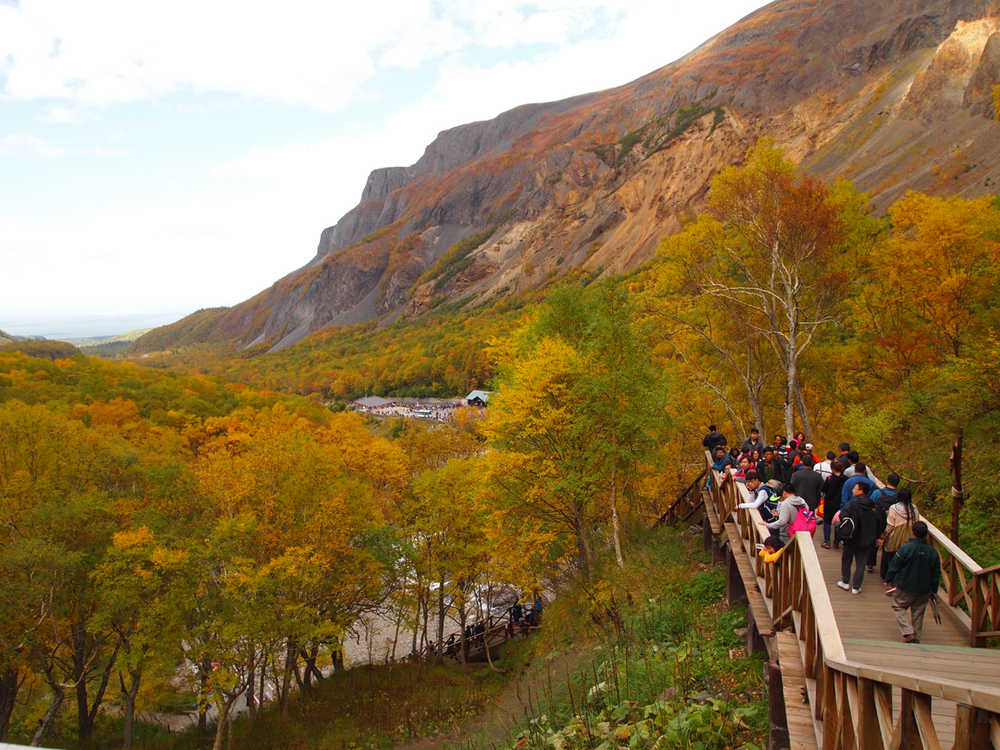I had the honor of serving as one of six delegates representing the U.S. Fish and Wildlife Service, Alaska Region, at the second annual Changbai Mountain International Ecological Forum last month in Jilin Province, northeast China. Professionals from around the world gathered to discuss the importance of protected areas (such as national parks, preserves and refuges) and how environmentally-conscious development can coexist with these protected lands.
In short, China is attempting to make development decisions that take into consideration their impacts on the natural world and the benefit of green spaces to human health. Our delegation was also present to continue a cooperative partnership between Arctic National Wildlife Refuge and Changbai Mountain National Nature Reserve, with a focus on wildland fire management and visitor services in protected areas.
Changbai Mountain straddles the China-North Korea border and has been held in almost sacred esteem by both nations for centuries. It is this adulation that has protected the landscape from development over the years, until it became officially protected within a 200,000 hectare reserve in 1960. However, now, with a growing middle class and increasingly easy tourist travel to the region (the Changbaishan airport opened in 2008), human pressures on the area’s natural resources are mounting. Illegal hunting, plant and mushroom gathering, and the simple recreational activities of law-abiding visitors are all taking their toll on the land.
Lake Tianchi, the awe-inspiring crater lake atop Mount Baekdu, can be viewed from two vantage points. We visited the North Approach on a Saturday, along with 10,000 other visitors. The experience is intense. First, in a vehicle driven by Changbai Mountain staff, you travel up the mountain from the forest of yew, Korean pine and birch at the base through 30 hairpin turns onto the tundra, and finally to the summit of gray rock. At an elevation of 6,257 feet, there is a chill to the air that solicits rental parkas in the gift store at the top. The weather is very changeable here year-round, and not unlike the experience of visitors to Alaska’s Mt. McKinley, many visits end with no view of the “Heaven Lake” at all.
The day of our visit was bright for us, and we not only found ourselves with a bit of sunburn on our faces but with over 600 photos in each of our cameras! Many of our photos were a result of our translators’ eagerness to capture us at what is to them a once-in-a-lifetime visit to a very special place. A colleague who works for China’s State Forestry Administration became a pro at getting me into nearly every photo op, and would take 5-10 pictures at each one.
I felt like I really saw the cultural importance of this protected place through one of our Chinese colleague’s response. She was so eager to share, so determined to immortalize our visit, that, unlike other field trips of the week, I was shepherded across the crater rim trail with very careful attention. She showed me a hospitality that I will not soon forget. It echoed the significance of Lake Tianchi to the Chinese people, and I felt honored to have seen it.
Once we made our way back down the trail to the Tourist Service Station, I was able to take in the rest of the infrastructure that made this high level of visitation possible, including new construction of another Visitor Center across the parking lot from the small gift shop and bathrooms. Managing the steady flow of people coming to this viewing area is an immense task.
Protecting visitors from accidents, protecting the land from the people by using boardwalks and shuttle buses and still trying to maintain an ecologically sound landscape at Changbai Mountain has proven hard over the years. Illegal activities including poaching, plant and mushroom gathering, and logging have taken a toll on the biodiversity of the Changbai region. Only 20 Amur (Siberian) tigers remain in the wild here, non-native wild boars are damaging the forest and unwise pest management practices from a decade ago have left parts of the forest devoid of insects, and thus also missing the birds and mammals that once fed on these insects. Walking for miles over several days before seeing or hearing a bird is more alarming than walking along a Kenai National Wildlife Refuge trail and seeing fresh bear sign.
Changbai Mountain welcomes visitors to share the beauty that is found within the Reserve’s borders. This beauty, however impressive, is but a melancholy fragment of its former self. What today’s visitors see are principally geologic features with remnants of native vegetation and even fewer wildlife.
In contrast, we are able to visit protected lands in Alaska like National Wildlife Refuges, National Parks and Alaska State Sanctuaries that are protecting whole ecosystems, with intact assemblages of native plants, animals, fish and people. I value the diversity of wildlife one short visit to the Kenai Refuge can reveal even more now that I have spent time in a protected area where the spectrum of sounds, flitting movement of birds, and muddy animal tracks along the trail are all missing.
The Kenai Refuge’s purpose to “conserve fish and wildlife populations and habitats in their natural diversity” has new meaning for me after seeing what can happen when the ecosystem is taken out of balance in an otherwise protected forest. I am glad my children will know Alaska with its beautiful species in their native homes but am sorry to have lost that opportunity in some protected areas of the world.
Leah Eskelin is a Visitor Services Park Ranger at the Kenai National Wildlife Refuge. You can find more information about the Kenai Refuge at http://kenai.fws.gov or http://www.facebook.com/kenainationalwildliferefuge.

